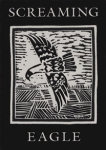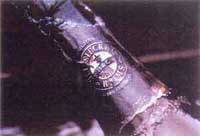The word wine has its root from the ancient Greek word for vines, vinos. Grapevines produces lush grapes which are then fermented to create the popular yet sophisticated alcoholic drink we know as wine. In many areas, the English word wine and its synonyms in different languages are protected by law, as other beverages similar to wine can be produced from fruits, rice, flowers and honey.
At the highest end, rare, super-expensive wines are often the costliest item on the menu, and exceptional vintages from the best vineyards may sell for thousands of dollars per bottle. Expensive red wines with their complex subtleties are traditionally more costly than other expensive wines.
Here are the most expensive wines in the world.

1992 Screaming Eagle
around $80,000
At Auction Napa Valley 2008, a charity event, a lot of six magnums of Screaming Eagle were sold for $500,000. In addition to the wine, the lot included a dinner at the winery. The lucky purchaser was Chase Bailey, an executive at Cisco Systems.

1945 Chateau Mouton-Rothschild Jeroboam
$114,614
Sold to an anonymous buyer at a Christie’s auction in 1997, this bottle comes from what is considered by wine enthusiasts to be one of the finest vintages of the 20th century.

“Th.J” 1787 Chateau Lafitte
$160,000
A bottle of 1787 Chateau Lafitte which sold at Christie’s London in December of 1985, this wine was originally reported to be from the cellar of Thomas Jefferson, the former US President, and this most expensive bottle of wine had the initials Th.J etched into the glass bottle. It made its way into the hands of American tycoon Bill Koch, who became suspicious of the origins of the four bottles he had purchased. Eventually, he instigated the investigation that debunked the supposed origin of what was, at the time of purchase, the most expensive wine in the world.

Shipwrecked 1907 Heidsieck
$275,000
These hundred year old bottles of Champagne from the Heidsieck vineyard in Champagne took over eighty years to reach their destination. Shipped to the Russian Imperial family in 1916, a shipwreck off the coast of Finland caused this champagne to be lost at sea until divers discovered over 200 bottles in 1997. Now they’re finally being sold—to wealthy guests at the Ritz-Carlton hotel in Moscow, at least. Of course, the wine’s extraordinary tale and incredible age are what makes it the world’s most expensive wine.
Source: most-expensive.net







